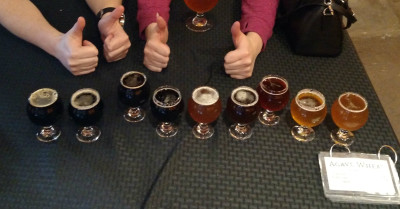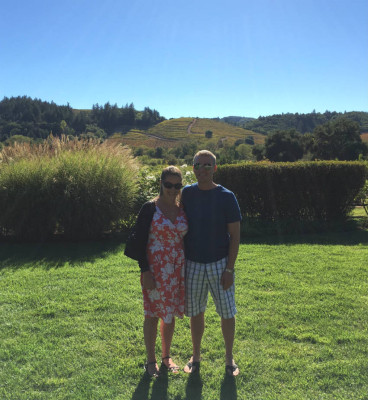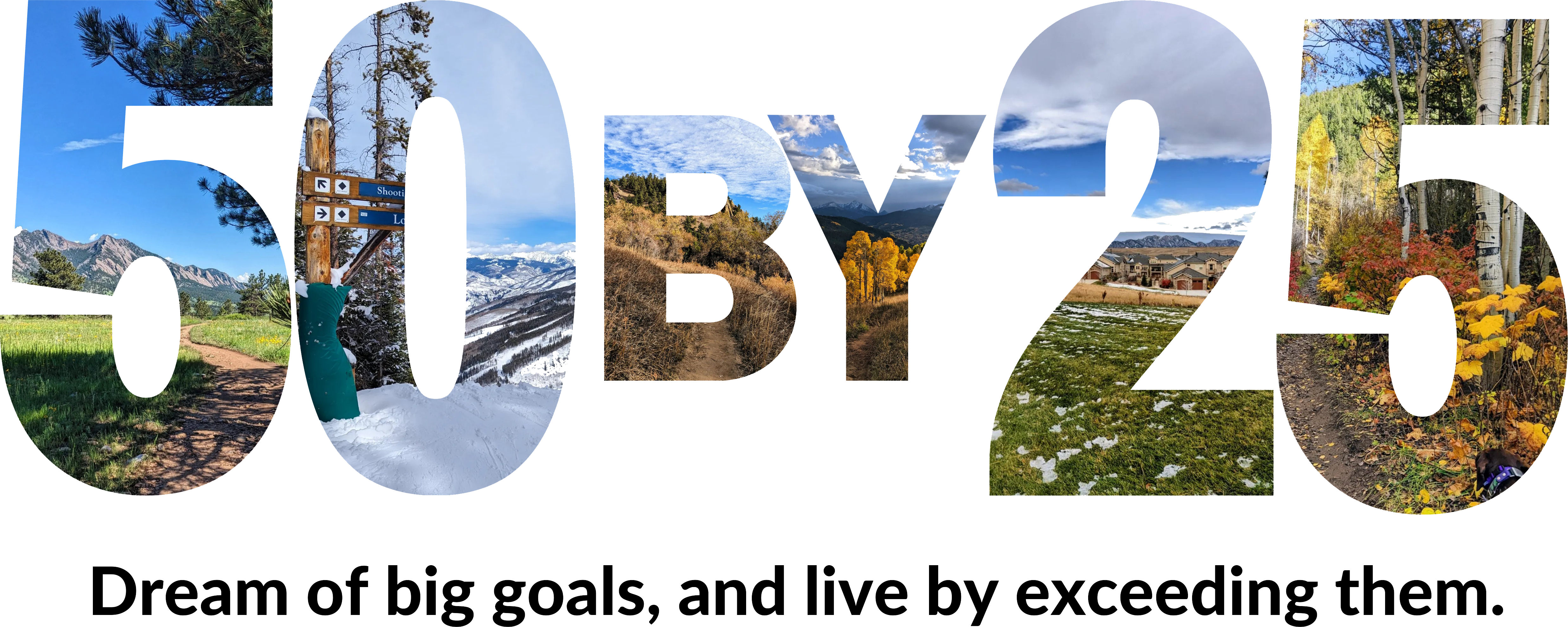Tonight, one of my clients organized a really fun “cheap/expensive” red wine tasting. He bought two bottles each of merlot, cabernet sauvignon, malbec, and zinfandel. One of each varietal was “cheap” (under $10) and the other was “expensive” (over $20). He poured cups for each of us participating in the tasting, and we had to try to identify which varietal was which and which wines were cheap vs expensive.
At the beginning of the tasting, I was telling my coworkers that blind tasting is much tougher than you’d think. I cited a tasting game my friends and I used to play at Valhalla, one of my favorite beer bars in New York. We’d get a flight of six beers, and intentionally get very different kinds (e.g., a pale ale, a IPA, a stout, a hefeweizen, etc). Then we’d take turns closing our eyes and having someone else pass us one of the beers. With our eyes still closed, we’d taste the beer and try to guess the type. I should add that this group of friends were pretty regular craft beer drinkers… and yet we’d frequently confuse something like a hoppy IPA with a vanilla porter. How crazy is that?!

All my coworkers laughed at this story, confident that my friends and I were just terrible tasters. But as our tasting tonight proceeded and we started getting more and more wines on the table, they realized that perhaps blind tastings are a bit harder than you’d think.
Once we had tasted everything, we scored our guesses by giving one point for the correct varietal and one point for the correct price point. (Yes, you only had a 25% chance of guessing the varietal but a 50% chance of guessing the price point, but we kept the scoring simple.) That meant that for eight wines of two points each, you could possibly score a perfect 16 points. And if you guessed randomly, the probability was that you’d score 10 points.
As it turns out, only one of us scored 9 points, two of us scored 8 points, and the “wine expert” in the group (a coworker who loves red wines) scored 5 points. So, we all performed worse than if we had simply guessed randomly. Again, I’ll ask: how crazy as that?

Turns out, it’s not just us. Back in 2005, a group of researchers set out to explore the effect of color on flavor perception. (Go ahead, click the link and read the whole thing – this write up is in plain layman’s English and it’s fascinating.) The short version is that they gave people vanilla yogurt that had been tinted with dyes, had them taste it, and then asked people what flavor they thought it was. When the yogurt was dyed, people were much more likely to think that it was the flavor associated with the color of the dye – i.e., they thought the red yogurt was definitely strawberry flavored.
Also, those whose favorite flavor was vanilla guessed vanilla more than those whose favorite flavor was something different – indicating that perhaps they were skewed to guess based on what they thought they liked the best. So perhaps I guessed that the wine I liked best down was a malbec not because I thought it actually had the characteristics of a malbec vs a cab, but because out of those four varietals, malbec is my favorite?

To make this post a little more relevant to my usual goal-setting and fitness content, I’ll add that there was also a study done where runners on a treadmill swished either water or Gatorade in their mouth without knowing which it was, and then had to spit it out. Despite the fact that they didn’t actually consume anything, the runners who swished Gatorade had more energy / performed better than those who swished water. The researchers have found that it’s because some regions of the brain light up simply when the tongue is exposed to carbohydrates, even though your body isn’t actually getting the benefit of consuming them. (Does that mean I can get drunk off wine by simply swishing it in my mouth and spitting it out? I think I may be getting the science wrong here…)
Either way, we all left the tasting with a little bit of a different perception than we came in. As my client pointed out, there are some varietals you probably always go to because they’re your favorites, and you shy away from others because you think you don’t like them… but a blind tasting may teach you otherwise.
The real lesson, though, is don’t ever spend more than $10 on a bottle of wine, since no one can tell the difference anyway 😉
(If you’re looking for suggestions, my go-to favorite red under $10 is Apothic Red, and my go-to favorite white under $10 is Bogle Chardonnay. Incidentally, we tried the Bogle Cabernet Sauvignon tonight and it was my favorite of the whole tasting… so at only $8 a bottle for that, perhaps I’ll have another go-to!)

I’m pretty sure that the probability of guessing randomly is worse than 25%/50% if the tasting was done as explained (that, everyone tasted all 8 bottles, made guesses, then found out results). We would expect a taster to be right 25% of the time if we repeatedly had them drink one wine, guess, and then start over – that is each event was independent. Sounds like the entire tasting was the ‘event’ so the number correct from random guessing would be much lower. If someone really wanted to know that probability I could figure it out….or we could crowd-source it…
The most striking thing was the score of the ‘wine expert’. I’d like to know how that scoring went down. Was the expert perfect on cheap vs more expensive or varietals or were the results mixed?
Follow up, it all depends on the experimental design, from the current description I’m not sure.
if picking randomly with only four varietals and four bottles; a taster would have a 1/4 chance at choosing the right varietal on the first taste, then 1/3 for the second taste (they’ve eliminated one choice already), and 1/2 chance for the third, and no choices left for the fourth. there is only one correct way of choosing that would guarantee a perfect selection, so there is a 1/24 chance to randomly pick all four varieties correctly. if tasters were given two tastes of the same varietal, they would have a 1/2 chance of picking cheap/expensive, but unless they were told the previous varietal before going on to the next it would still be 1/24 to pick each varietal correctly.
Based on my **current** understanding of the taste test, I’d expect a taster with no taste sensation, to average (over many repetitions/iterations) a score of 3 points.
You’re correct – we guessed them all at the end, so it was not independent. I wonder if I would have done better guessing one by one?
Ohhh you are so right! I didn’t think about the fact that each guess wasn’t independent (even though I myself changed a few wines because I thought several of them were malbec but I knew there were only two).
I didn’t see his sheet so I’m not sure which ones he got right! I was an equal split between guessing right on the varietal and the price, but I think the key word there is “guessing” 😉
So, you’re just a lucky guesser, huh?
HA, I think so 😉
You should come to South Africa, the really expensive bottles of wine are $10! 🙂
How about I come to South Africa regardless? I think the $10 expensive wine is just another in a long list of reasons to go 🙂
yes blind tasting is so hard! The apothic red blend and dark red are two of my go to’s right now although being NY everything is a couple dollars more 😉 but still a fantastic price point for a really nice wine. I am also a fan of the bogle varieties. I’ve learned that the more expensive the bottle does not necessarily mean it will automatically be better after doing lots of wine classes at NY Vintners (although I still know so little about wine!)
I’ve had the Apothic Dark a few times and I like it, but I don’t love it the way I do the Apothic Red. (Ditto for Apothic White.) However, one of my coworkers yesterday told me that they also make “Apothic Crush” as a special release and she thinks it comes out in February… I am going to keep my eyes peeled!
The yogurt experiment reminds me of my childhood eating Froot Loops–I was positive that each color was a different flavor, and used to save my “favorite” for last. I think I was a teenager before I could finally be convinced that they all actually taste the same. (Not sure what it says about me that my immediate association with a post focusing on wine was brightly colored cereal…maybe that I need to go taste-test some more kinds of wine? 😉 )
There are a lot of childhood foods like that! I used to do the same thing with M&Ms. (Red = best, brown = worst, obviously.)
See, this is a food post that I can get behind. Paragraphs about: wine, gatoraide, yogurt….pictures of beer…. It is the best post ever!!
I’ve never done a full on blind taste test like this, partly because I”m terrified of how I would do!
You’ve never done one before? Challenge accepted!
Nope! never done one – the closest that I’ve done has been at your house!